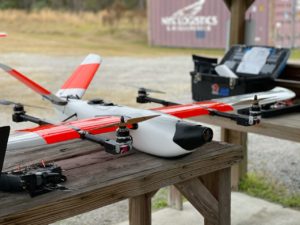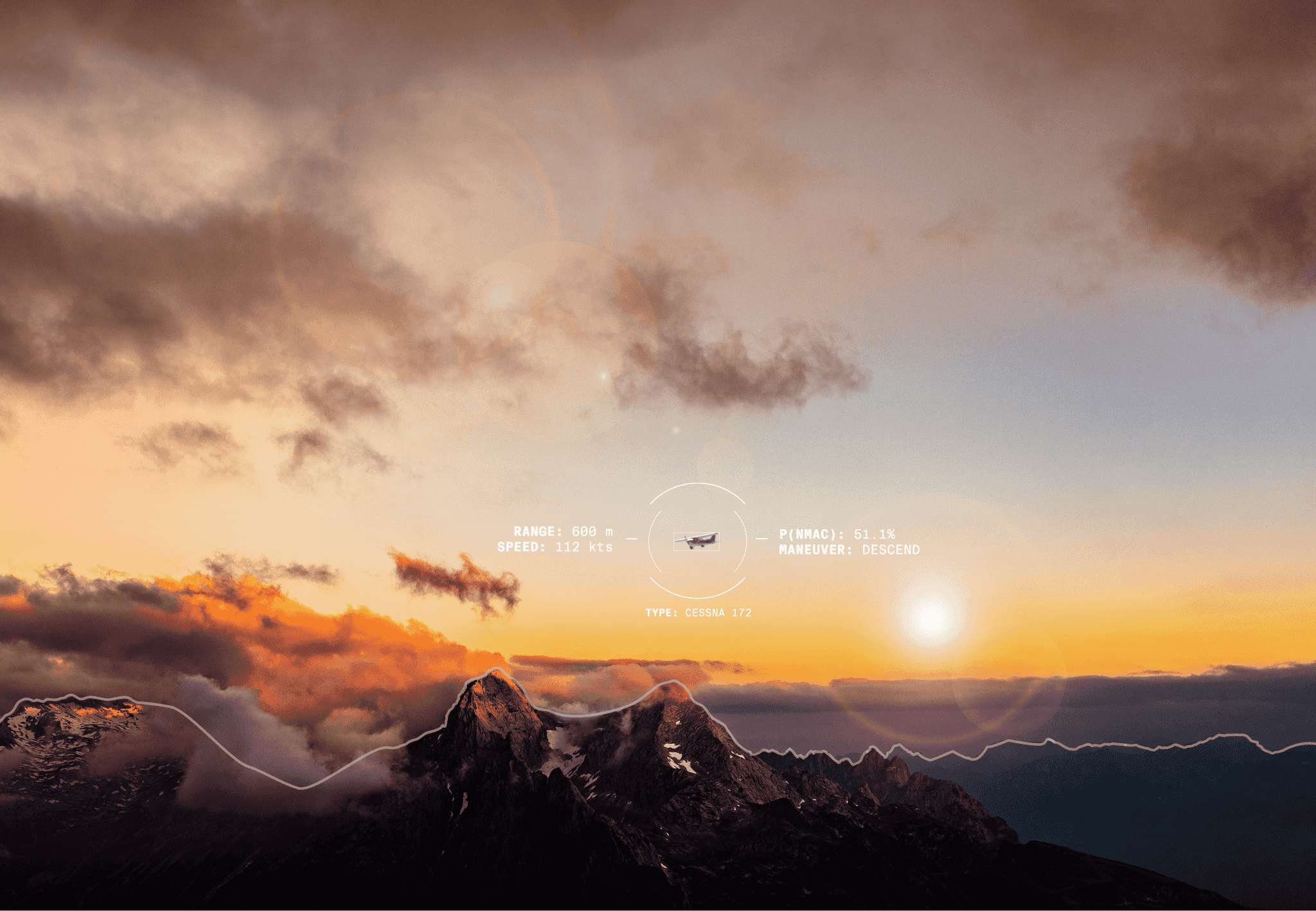 Industry Experts Speak – What Will It Take to Make BVLOS A Reality, Enabling Drones in the Oil and Gas Industry and Beyond?
Industry Experts Speak – What Will It Take to Make BVLOS A Reality, Enabling Drones in the Oil and Gas Industry and Beyond?
By: Dawn Zoldi
Continue reading below, or listen:
More than six years ago when Jon Damush, the current CEO of Iris Automation, was the Chief Growth Officer for Boeing subsidiary Insitu, his team inspected Shell Oil’s liquified natural gas natural well heads with drones, beyond visual line of sight (BVLOS).
They used the ScanEagle and a patchwork of command and control radios, terrestrial communications, VHF transceivers and dedicated radars coupled with constant ATC contact. This project increased inspection rates by a power of almost 20 – from six to ten well heads to over 200 per week. Some data (live video) was realtime, other data (3D models) took several days to analyze by computer at the time, it nevertheless proved invaluable. The project not only relieved workers from the dull, dirty and dangerous tasks they had previously been required to perform, it also produced much higher quality information for decision-makers located in a central location. So why, in 2022, are BVLOS inspections in the oil and gas industry, and other industries, not yet routine? Industry experts gave their opinions on this topic at this year’s Energy Drone & Robotics Coalition three-day Summit.
 Jon Damush, CEO Iris Automation Inc. – Drive Public Benefit
Jon Damush, CEO Iris Automation Inc. – Drive Public Benefit
Damush, a seasoned crewed aviation pilot with over 30 years of extensive aviation technology experience and executive leadership, has led new business ventures at Boeing NeXT, growth at Insitu and acted as executive liaison and board observer to SkyGrid, LLC, a joint venture between Boeing and SparkCognition. He believes the lack of regulation (or more generic approvals) presents the primary challenge to moving BVLOS operations forward.
In his current role as CEO of Iris Automation, a leader in collision avoidance technology, Damush participated as an industry representative on the Federal Aviation Administration’s (FAA) BVLOS Aviation Rulemaking Committee (ARC). He said one of the fundamental emphasis items for the committee was to focus on BVLOS drone operations which provide public benefit.
Damush explained, “The FAA’s job is to keep the airspace safe. In crewed aviation, they’ve been doing this successfully for decades. Most of us don’t think twice about our safety when we step onto a commercial airliner to travel. We take our safety for granted. Drones are new entrants into that same airspace, and there will be a lot of them. A conservative approach to integrating them into our airspace should not be surprising to anyone. But the FAA is a public entity, and therefore sets priorities based on public need. So, as an industry, we need to drive and communicate public benefit in our operations.”

As the Shell Oil vignette above illustrates, those benefits include safer and more efficient operations for businesses and their employees. “BVLOS operations also make us a better neighbor,” he noted. “Drone flights avoid the need to drive over land and produce less noise than heavy ground equipment.”
According to Damush, public benefit will drive public acceptance. That acceptance will encourage the FAA to advance BVLOS regulations and regularize these operations. “We need to tell our stories that save time, help people and make businesses thrive,” he said. “We all have a responsibility to communicate the benefits and also show that we put safety first in our operations.”
 Trevor Perrott, CEO and Founder, Censys Technologies – Change Culture
Trevor Perrott, CEO and Founder, Censys Technologies – Change Culture
An aerospace engineer by training, Trevor Perrott has a background in systems and human factors engineering for companies including Gulfstream Aerospace and Textron Systems. He founded Daytona Beach, Florida-based Censys Technologies to enable airborne economies with drones and flying cars. Perrott believes that the FAA operates from a spirit of fear that the industry needs to conquer through culture change within the government, the drone industry and among its clients.
Culture change must begin, according to Perrott, with potential clients first. Proving the value proposition of drones to oil and gas companies, and others, will incentivize the desirability of these assets to a wide range of market sectors. Censys has had great success in doing this. The company currently holds about thirty percent of all of the FAA’s BVLOS waivers and routinely performs missions traditional helicopters would otherwise do, but cheaper and with greater levels of safety.
Perrott attributes the success of his company to its crawl-walk-run approach. “Crawling may be demonstrating the drone, providing a business with drone training or just talking to business leaders about relevant case studies.” All of these efforts should illustrate how drones can create value for organizations. “Drones will have a cell phone-like impact on the world,” Perrott said. “We just need to keep showing that every day.”

Similar to Damush, Perrott believes that once businesses routinely use drones in their operations, government action will follow, in terms of required regulation and funding. “It’s a policy level issue. Drone evangelism remains fundamental to get more capital flowing in from all angles, including customers, investors, banks, and government officials,” he said. “All of that originates from the ability to storytell effectively. And we all have a treasure trove of good stories to share.” Those stories, he thinks, will encourage regulators to start speaking from a tone of acceptable level of risk, instead of a zero-risk mindset.
Those stories, Perrott noted, can only be shared if the drone industry itself shifts its culture. “I have nearly two dozen projects that I’m not even allowed to talk about publicly because of non-disclosure agreements or concerns over proprietary information,” he lamented. Even close partners may be hamstrung about what they can speak to the public about. “We need a culture change in America,” he said. “We need to tear down the NDA wall and let people know all the good things that are out there.” Only then can the drone industry thrive.
Read more about Iris Automation, Censys Technologies, and BVLOS Flight:
- Iris Automation Casia G: Ground-Based Detect and Avoid Technology
- Iris Automation Scores 2nd BVLOS Waiver: This Time with Casia G, Ground-Based Detect and Avoid
- Iris Automation BVLOS Approval for City of Reno Fire Department
- The Longest Distance BVLOS Waiver Yet: Censys and Soaring Eagle Technologies
- Censys BVLOS Waiver Applications Have Been 100% Successful: Record Continues with AECOM
- Censys: Made in the U.S. Fixed Wing Drones for BVLOS Flight
 Dawn M.K. Zoldi (Colonel, USAF, Retired) is a licensed attorney with 28 years of combined active duty military and federal civil service to the U.S. Air Force. She is the CEO & Founder of P3 Tech Consulting and an internationally recognized expert on uncrewed aircraft system law and policy. Zoldi contributes to several magazines and hosts popular tech podcasts. Zoldi is also an Adjunct Professor for two universities, at the undergraduate and graduate levels. In 2022, she received the Airwards People’s Choice Industry Impactor Award, was recognized as one of the Top Women to Follow on LinkedIn and listed in the eVTOL Insights 2022 PowerBook. For more information, follow her on social media and visit her website at: https://www.
Dawn M.K. Zoldi (Colonel, USAF, Retired) is a licensed attorney with 28 years of combined active duty military and federal civil service to the U.S. Air Force. She is the CEO & Founder of P3 Tech Consulting and an internationally recognized expert on uncrewed aircraft system law and policy. Zoldi contributes to several magazines and hosts popular tech podcasts. Zoldi is also an Adjunct Professor for two universities, at the undergraduate and graduate levels. In 2022, she received the Airwards People’s Choice Industry Impactor Award, was recognized as one of the Top Women to Follow on LinkedIn and listed in the eVTOL Insights 2022 PowerBook. For more information, follow her on social media and visit her website at: https://www.

Miriam McNabb is the Editor-in-Chief of DRONELIFE and CEO of JobForDrones, a professional drone services marketplace, and a fascinated observer of the emerging drone industry and the regulatory environment for drones. Miriam has penned over 3,000 articles focused on the commercial drone space and is an international speaker and recognized figure in the industry. Miriam has a degree from the University of Chicago and over 20 years of experience in high tech sales and marketing for new technologies.
For drone industry consulting or writing, Email Miriam.
TWITTER:@spaldingbarker
Subscribe to DroneLife here.







[…] Enabling Drones in Oil and Gas: What Will it Take to Make BVLOS a Reality? Industry Experts Speak […]